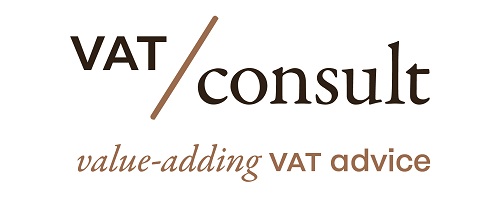On September 5, 2024, the ECJ issued the AG Opinion in the joined cases C-639/22 C-640/22 C-641/22 C-642/22 C-643/22 C-644/22.
Context: Reference for a preliminary ruling — Common system of value added tax (VAT) — Directive 2006/112/EC — Exemptions — Article 135(1)(g) — Management of special investment funds — Concept — Pension fund — Comparability with an undertaking for collective investment in transferable securities (UCITS) — Investment risk borne by members — Scope — Need for a comparison with a pension fund considered by the Member State concerned to be a special investment fund
Summary:
Facts:
- The case involves a compulsory occupational pension fund for self-employed medical specialists.
- The pension scheme is a defined benefit scheme where the retirement pension is set at an annual amount, which can be increased based on certain conditions.
- Profits of the fund are used exclusively to increase standard pensions, and participants have some options regarding their pension.
Question:
- Does Article 135(1)(g) of the VAT Directive consider unit-holders in a pension fund to bear investment risk, and does this make the pension fund a “special investment fund”?
- Factors to consider include whether unit-holders collectively bear the investment consequences, the magnitude of the risk, and the extent to which pension benefits depend on other factors.
Decision:
- Article 135(1)(g) of the VAT Directive is interpreted to mean that members of a pension fund bear investment risk only when the pension amount primarily depends on investment results.
- Factors such as the number of years of pension accrual or interruptions in accrual are not decisive.
- To determine if a pension fund qualifies for the exemption under Article 135(1)(g), a comparison with collective investment undertakings is necessary, along with an assessment of the fund’s comparability to other funds regarded as special investment funds by the Member State concerned.
Article in the EU VAT Directive
Article 135(1)(g) of Council Directive 112/2006/EC
Article 135
1. Member States shall exempt the following transactions:
(g) the management of special investment funds as defined by Member States;
Facts
- The facts and legal context at issue in this case are substantially similar to those at issue in Case C-644/22. The differences are indicated below to the extent relevant.
- In this case, the applicant is not an occupational pension fund, but a compulsory occupational pension fund for self-employed medical specialists. The Minister of Social Affairs and Employment may make participation in an occupational pension scheme compulsory.
- The pension scheme is a defined benefit scheme. The retirement pension is set at an annual amount for each calendar quarter for which the member has been liable to pay contributions (the standard pension). That amount may be increased by the applicant’s management board, according to a certain formula, compared to the previous calendar year. If there are insufficient funds to do so, the applicant’s management board may refrain from increasing that amount.
- Any profits of the fund accrue to the members and are used exclusively to increase all standard pensions. Profit sharing is thus part of the pension adjustment.
- Participants also have some options. This allows them to choose to start the pension earlier or later or to continue participation voluntarily.
Questions
1) Must Article 135(1)(g) of the VAT Directive be interpreted as meaning that unit-holders in a pension fund such as the one at issue in the main proceedings can be regarded as bearing investment risk, and does this mean that the pension fund constitutes a ‘special investment fund’ within the meaning of that provision? Is it relevant in that regard:
- whether unit-holders bear an individual investment risk or is it sufficient that unit-holders as a collective – and no one else – bear the consequences of the investment results?
- what the magnitude of the collective or individual risk is?
- to what extent the amount of the pension benefit depends also on other factors, such as the number of years of pension accrual, salary level and the actuarial interest rate?
AG Opinion
1. Article 135(1)(g) of Directive 2006/112/EC on the common system of value added tax must be interpreted as meaning that an investment fund comparable to a UCITS, which is thus a ‘special investment fund’, is a fund which mostly fulfils the criteria set out in the first sentence of Article 1(2) of Directive 2009/65/EC on the coordination of laws, regulations and administrative provisions relating to undertakings for collective investment in transferable securities. This requires, in particular, that the investment fund is open to the public, that there is a redemption obligation similar to that for a UCITS and that investors bear a comparable investment risk. The latter condition depends essentially on whether the pension commitment provides primarily for guaranteed benefits or benefits dependent on the performance of the invested capital.
2. For the application of Article 135(1)(g) of Directive 2006/112 in the case of funds which are not UCITS, it must be assessed not only whether they are comparable to UCITS but also whether they are comparable to other funds that are not UCITS but are regarded by the Member State as special investment funds. The Member State may exempt the management of such special investment funds with due regard to the principle of fiscal neutrality. However, this does not preclude a comprehensible differentiation being made between the differently structured pillars of the retirement pension system in question and in particular between guaranteed pension commitments on the one hand and pension commitments dependent on the performance of the invested capital on the other hand.
Decision
1. Article 135(1)(g) of Council Directive 2006/112/EC of 28 November 2006 on the common system of value added tax
must be interpreted as meaning that the members of a pension fund performing, under a collective pension scheme, a pension agreement providing for pension entitlements and retirement benefits, the amount of which – albeit based on a standard pension or occupational income and the number of years of employment of each member – may vary under certain conditions as a result of the investments made by that pension fund, may be regarded as bearing the investment risk only where that amount depends primarily on the performance of those investments. For the purposes of that assessment, the number of years during which the pension entitlement of a member has accrued or the fact that the accrual of pension entitlements was interrupted at a certain point in time as far as a pension fund was concerned are irrelevant. The fact that the risk is borne individually or collectively, in the event of, inter alia, bankruptcy, or that an employer acted as a guarantor during a certain period of time for the targeted pension accrual, are relevant factors, without being decisive per se.
2. Article 135(1)(g) of Directive 2006/112, read in the light of the principle of fiscal neutrality,
must be interpreted as meaning that, in order to determine whether a pension fund that is not an undertaking for collective investment in transferable securities may benefit from the exemption provided for under that provision, it is necessary not only to carry out a comparison with such an undertaking but also to assess whether, in the light of the legal and financial situation of the member in relation to the pension fund, that pension fund is comparable to other funds which, without being undertakings for collective investment in transferable securities, are regarded by the Member State concerned as being special investment funds for the purposes of that provision.
Source
Similar ECJ cases
- Roadtrip through ECJ Cases – Focus on Exemption – Management of special investment funds (Art. 135(1)(g))
- ECJ C-644/22 (BPFL) – Questions – Does the exemption for the management of mutual funds apply to a pension fund?
Reference to the case in the other EU MS
Newsletters
- Join the Linkedin Group on ECJ/CJEU/General Court VAT Cases, click HERE
- VATupdate.com – Your FREE source of information on ECJ VAT Cases














